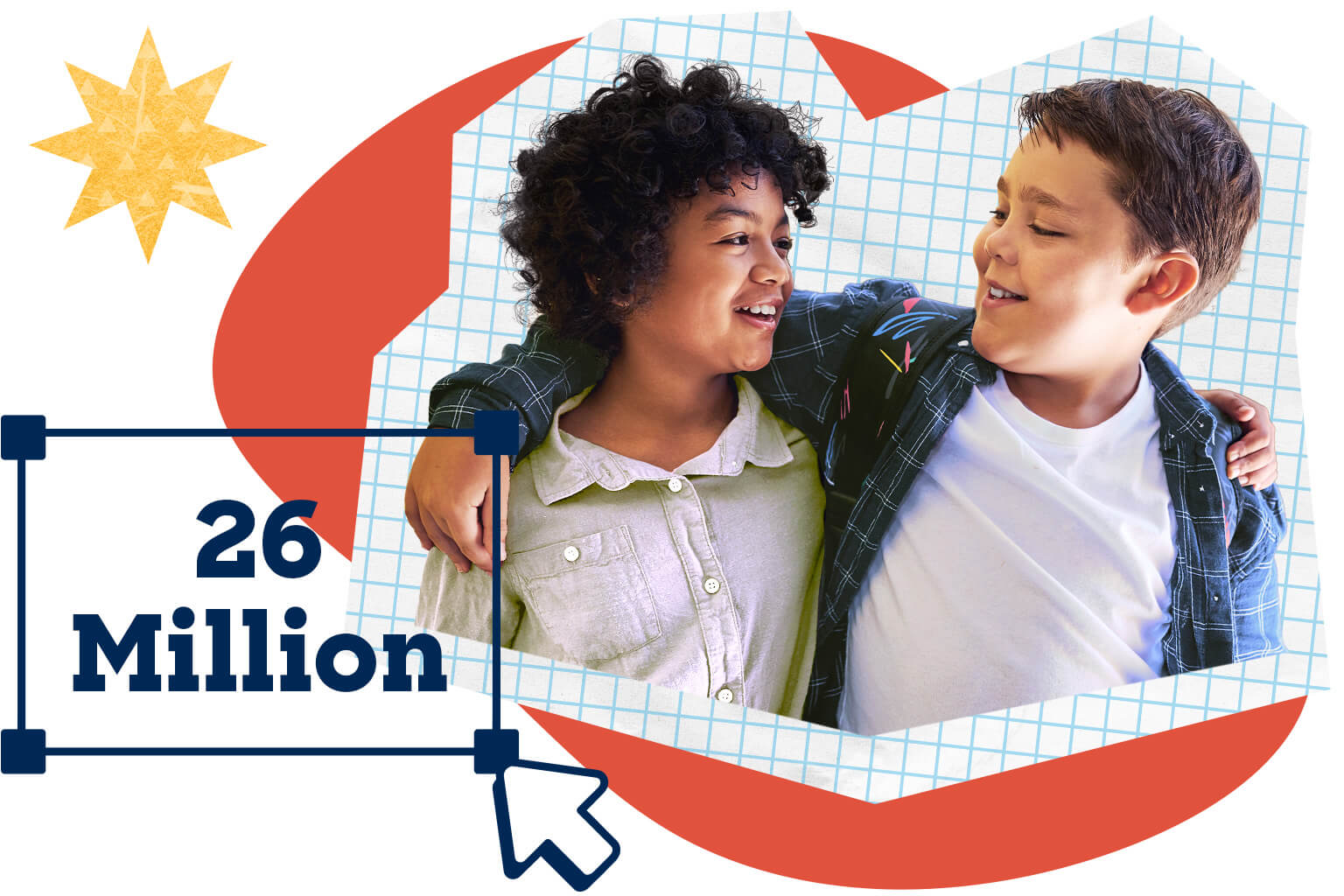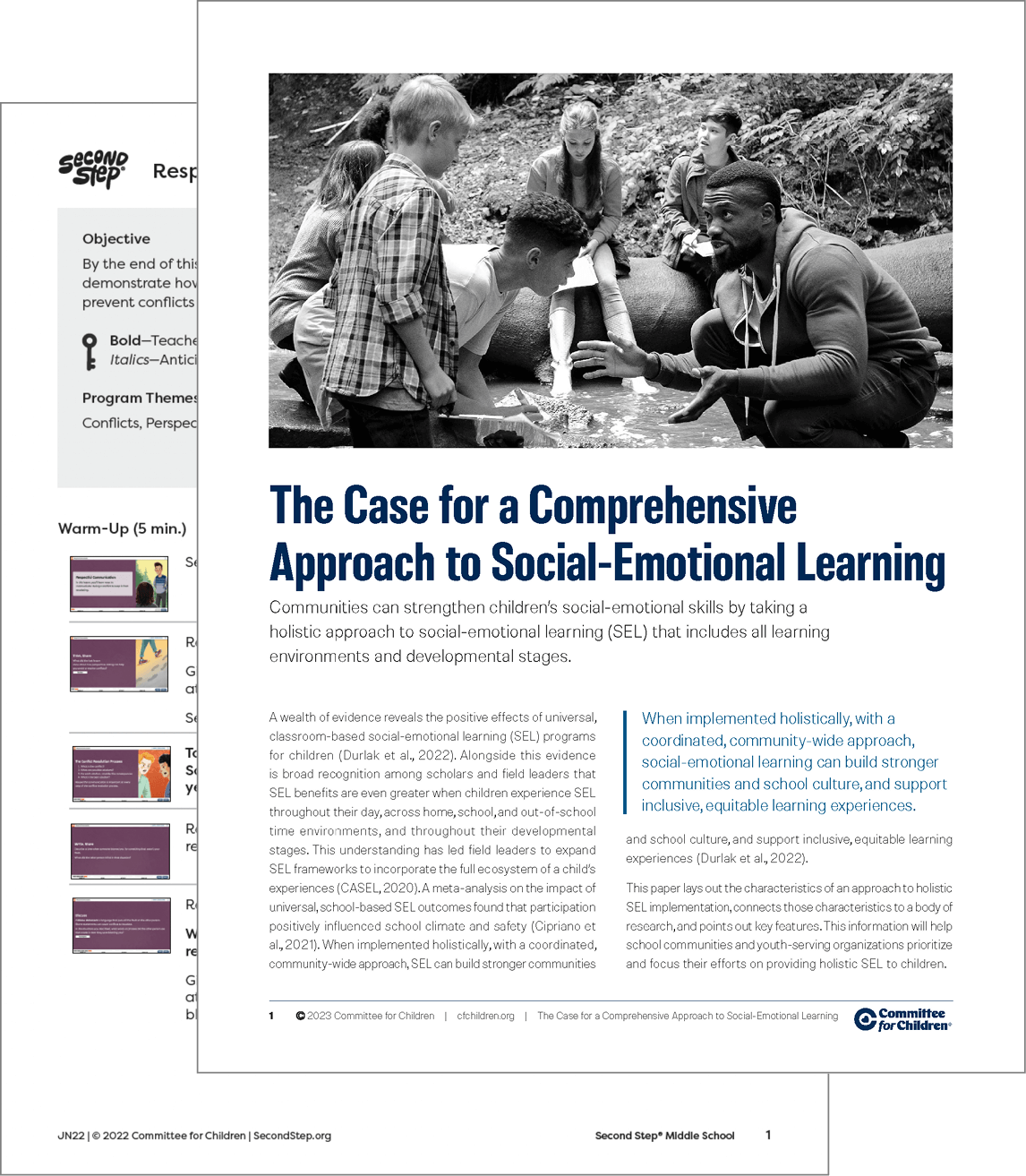Second Step® Programs Homepage
NOW AVAILABLESecond Step® High School
Returning Users
New Users
Stay Connected:
Empowered with Skills for Life
Second Step® programs help students build social-emotional skills—like nurturing positive relationships, managing emotions, and meeting goals—so they can thrive in school and in life.
The Second Step® Difference

Research
Five key commitments to research quality and integrity set our programs apart with great experiences and positive outcomes for students.

Impact
More than 26 million children in 45,000 schools in all 50 states and around the world benefit from our social-emotional learning programs each year.

Vision
Educators spoke, and we listened: we’re building more engagement, flexibility, and implementation support into our full range of PreK through Grade 12 programs.

I really trust the Second Step® team to make sure my district's schools have exactly what they need to build stronger communities. Being part of a nonprofit, I know they care.
Ryan Voegtlin, Director of Student Services, Anne Arundel County Public Schools
Get Your Free District Consultation
Speak with an expert to learn how Second Step® programs can align with your district’s social, emotional, and academic goals.
We dislike spam as much as you do and promise to keep your information private.
Take the Next Step
Stay in Touch
Subscribe to our Second Step® newsletter to receive free resources each month.
